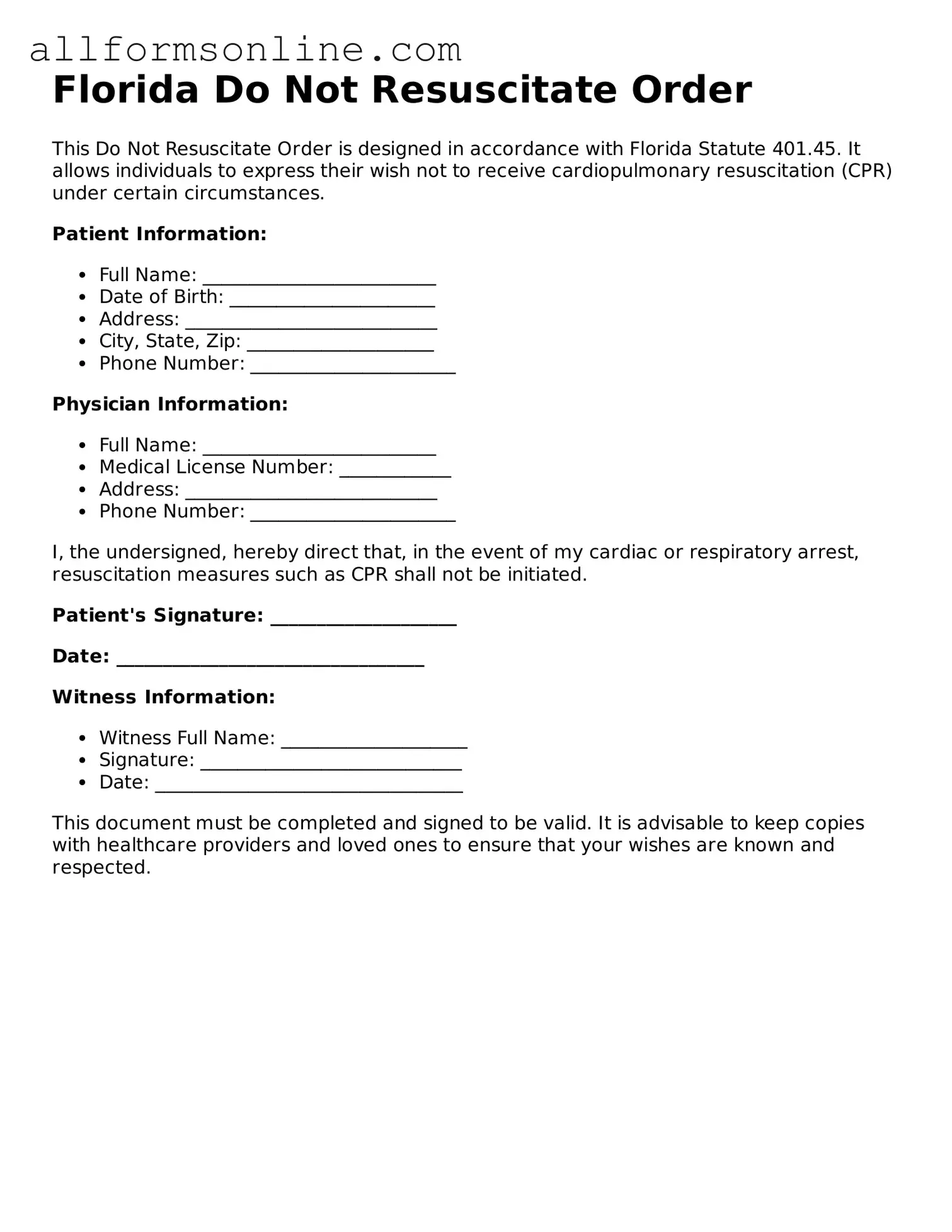What is a Florida Do Not Resuscitate Order (DNRO)?
A Florida Do Not Resuscitate Order is a legal document that allows a person to refuse resuscitation efforts in the event of a cardiac arrest or respiratory failure. This order is intended for individuals who wish to avoid life-saving measures such as CPR, intubation, or advanced cardiac life support. It is important for the order to be completed and signed by a qualified physician, and it must be presented in a specific format to be valid in medical settings.
Who can request a Do Not Resuscitate Order in Florida?
Any adult who is capable of making healthcare decisions can request a DNRO. This includes individuals who are terminally ill or have a medical condition that significantly limits their quality of life. Additionally, a legally appointed healthcare surrogate can also request a DNRO on behalf of an individual who is unable to make decisions due to incapacity. It is crucial that the individual understands the implications of the order before it is signed.
How do I obtain a Florida Do Not Resuscitate Order?
To obtain a DNRO in Florida, you must first discuss your wishes with a qualified physician. The physician will evaluate your medical condition and determine if a DNRO is appropriate. Once agreed upon, the physician will complete and sign the DNRO form. After it is signed, you should keep the original document in a safe place and provide copies to your healthcare providers, family members, and anyone else involved in your care. This ensures that your wishes are known and respected in case of a medical emergency.
What should I do if my wishes change regarding resuscitation?
If your preferences regarding resuscitation change, you can revoke or modify your Do Not Resuscitate Order at any time. To do this, you should inform your physician and any healthcare providers about your decision. It is advisable to complete a new DNRO form if you wish to change your order. Ensure that all copies of the previous order are destroyed or marked as revoked to avoid confusion during medical emergencies. Keeping your loved ones informed about your current wishes is also essential.
